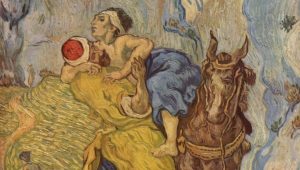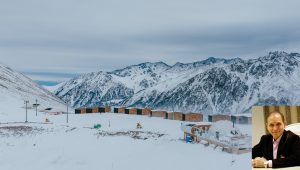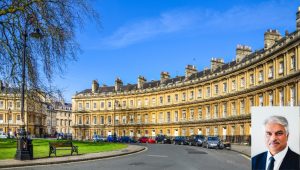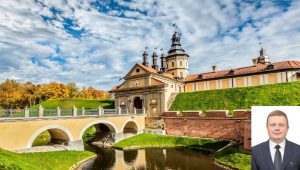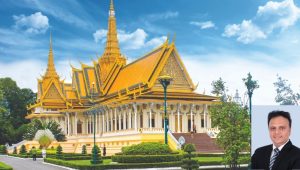In the prestigious 2023 World Travel Awards, Cambodia claimed top honours as ‘Asia’s Leading Cultural Destination’ and ‘Asia’s Leading Youth Travel Destination.’ Formerly known as Kampuchea, this rising star in South Asian tourism has charmed the world with its cultural richness and ecological wonders. Hosting 3.5 million international visitors from January to August 2023, Cambodia’s allure knows no bounds, weaving an enchanting tapestry of experiences that define its unparalleled appeal
By H.E. Mr. Karthik Tallam, Honorary Consul of the Kingdom of Cambodia in Bangalore
“STAND UP PADDLEBOARD, THE FASTEST GROWING WATER SPORT GLOBALLY, CAN BE ENJOYED IN KAMPOT, CAMBODIA”
Nestled between the vibrant landscapes of Thailand and Vietnam, with Laos to the north, Cambodia stands as a tropical haven bathed in perpetual sunshine. The nation boasts three key gateways through its international airports: the bustling capital and economic hub, Phnom Penh; the cultural epicentre, Siem Reap; and the idyllic vacation destination, Sihanoukville. Welcoming visitors with open arms, Cambodia offers convenient entry options such as Visa-on-Arrival, e-Visa, and diplomatic office-issued visas, catering to the diverse array of tourists, including those from India.
PHNOM PENH
Distinguished as the ‘Pearl of Asia,’ Phnom Penh stands as the largest city, serving as a focal point for both economic prowess and urban advancement. Explore its rich tapestry of history and contemporary vibrancy by easily accessing iconic sites through well-connected transportation networks.
The Royal Palace: The residence of the king of Cambodia is located on the shore overlooking the confluence of four rivers, the Upper Mekong, the Lower Mekong, the
Bassac and the Tonle Sap. The palace is an excellent example of traditional Khmer architecture and contains the temple of the Emerald Buddha (Wat Preah Keo Morakot),
stupas (Chedei), tall spires (Prang prasat) and mural paintings. Also notable is the Chan Chhaya Pavillion and a French-style building that was a gift from Napoleon III.
National Museum: Unveiled by King Sisowat in 1920, the National Museum of Cambodia boasts enduring charm with its vibrant red architecture. With UNESCO’s patronage, this cultural gem shelters over 1400 precious artifacts, encompassing sculptures, ceramics,
and the world’s largest collection of Khmer art.
Phsar Toul Tum Poung: Familiarly dubbed the Russian Market, this bustling marketplace earned its popularity among Russian expatriates in the 1980s. Offering a vibrant blend of traditional Khmer attire and contemporary merchandise, the market features an array of silk vendors and showcases branded items from local factories.
Riverfront Delight: At the confluence of the Mekong, Tonle Sap, and Bassac rivers lies the captivating riverfront in Phnom Penh. Renowned for its scenic allure, river cruises are a favoured attraction, providing a unique perspective of the city. Along this dynamic waterfront, a lively array of local restaurants, bars, and international chains create a vibrant
culinary and entertainment scene. From nightclubs and music venues to karaoke spots and upscale bars, the Riverfront exudes an energetic atmosphere, ensuring a lively and memorable experience for visitors exploring this bustling tourist hub.
Kirirom National Park: A two-hour drive from Phnom Penh, the park is known for its rare plants, camping activities and tours around the tranquil forest. The Phnom Tamao Zoo houses rare and endangered species, exotic birds and reptiles.
KAMPOT PROVINCE
Just a few hours’ drive from Phnom Penh, the town of Kampot, nestled in the province, unfolds a plethora of ideal destinations for tourists.
The Bokor National Park is popular for its cool mountain climate and remains a year-round favourite amongst locals and foreigners alike. SUP or Stand Up Paddleboard, the fastest growing water sport in the world, can be leisurely enjoyed here in Kampot. Certified yoga practitioners are available to help improve your paddle board skills and take your yoga practice further as you balance on the board. Canoeing and kayaking are also a favourite in Kampot.
KEP PROVINCE
Nestled 168 kilometres from Phnom Penh, Kep is a serene seaside province renowned not only for its pristine beaches but also for its exquisite pepper, salt, and delectable seafood, notably the renowned crabs. A visit to this coastal gem is a quintessential experience for those exploring Cambodia.
SIEM REAP
Home to the ancient temples of Khmer, Siem Reap is famous for Cambodian historical structures and structures representing the cultural heritage of the country. Art collectors can find handmade items like wood and stone statues, lacquered sculptures, tableware and panels, ceramic home furnishings, and a collection of silk clothing, scarves, accessories and
jewellery inspired by the Angkorian heritage and fitted to contemporary lifestyles in Siem Reap.
Angkor Wat Temple: Constructed in the twelfth century by King Suryavarman II to honour the Hindu god Vishnu, the Angkor Wat Temple has garnered UNESCO recognition as “one of the most important archaeological sites in Southeast Asia.” Revered as the 7th Wonder
of the World, these accolades aptly capture the profound significance and awe-inspiring beauty of this remarkable monument.
Bayon Temple: The Bayon Temple, the only Angkorian state temple, was built primarily as a Mahayana Buddhist shrine dedicated to the Buddha. The Bayon’s most distinctive feature is the multitude of serene and massive stone faces on the many towers that jut from the
upper terrace and cluster around its centre peak.
Ta Prohm Temple: Popularly known as Tree Temple, Ta Prohm is one of the finest specimen of Khmer creativity and architecture of the Angkorean era. Since 2003, the Archaeological Survey of India (ASI) has worked for restoration of the Ta Prohm temple. Ta Prohm temple, dedicated to Lord Brahma (Prohm) was built during the period between mid-twelfth century and early thirteen century by Khmer King Jayavarman VII.
Preah Vihear: It is a Hindu temple dedicated to Shiva, and was built during the Khmer Empire. It is a key part of religious life in Cambodia. This Cambodian temple was declared a World Heritage Site by UNESCO on July 07, 2008.
Tonle Sap: The Tonle Sap Lake, fed by the mighty Mekong and the Tonle Sap Rivers, is a vast expanse of water that forms the most significant topographical feature in Cambodia. It houses the long-tailed macaque, hairy-nose otter, masked finfoot and Siamese crocodile.
MEKONG RIVER
The Irrawaddy dolphin inhabits the Mekong River. Preah Rumkel is probably one of the best and least visited areas to observe the Mekong Dolphins in their natural habitat. Sopheak Mit Waterfall is the biggest waterfall along the Mekong River in Cambodia.
RATTANAKIRI PROVINCE
Located at the north-eastern corner of Cambodia, this frontier province is renowned for its unique natural beauty and wealth of natural resources. The undulating hills and mountains, plateaus, watershed lowlands, clear crater lakes, rivers and beautiful waterfall form an impressive itinerary of intriguing destinations for eco-tourism. The huge Virachey National Park offers exciting treks and many waterfalls.
SIAHANOUKVILLE
Cambodia’s tropical coastline is one of the best kept secrets in the world. From strolling on sandy bays to eating fresh seafood, this 443km of coastline is a treat indeed. Some of the most popular beaches are Ochheuteal beach, Otres beach, Sokha beach, Victory beach, Independence beach, Ream beach, Koh Puos beach, Prek Treng beach, Koh Rong, Koh Rong Sanlem.
TRADITIONAL DANCES
The classical dance forms in Cambodia, developed under the royal patronage are performed mainly by women, referred to formally as Robam Apsara or simply Apsara. The Royal Khmer Ballet has a repertoire of over 40 dances and 60 dance dramas. The dramas are choreographed re- enactments of classic Khmer tales.
BOKATOR
Formally known as Labokator, Bokator is a form of Khmer Martial Art. Bokator was a warrior art, designed to be used on the battlefield. It uses a diverse array of elbow and knee strikes, shin kicks, submissions and ground fighting. When fighting, Bokator practitioners still wear the uniforms of ancient Khmer armies.
“THE KHMER CUISINE INCLUDES NOODLES, SOUPS, STIR-FRIES, CURRIES, SWEETS, AND THEIR STAPLE, RICE”
KHMER CUISINE
The delectable Khmer cuisine includes noodles, soups, stir-fries, curries, salads, sweets, tropical fruits, vegetables and, of course, rice which is the staple food for Cambodians.
Cambodians perfected the art of spice blending and created a tasty paste called “Kroeung” consisting of native ingredients like galangal, kaffir-lime leaves, lemongrass, ginger and turmeric. The Amok, a famous Cambodian dish, is a complex and thick preparation – almost like a soufflé – that famous Chef Gordon Ramsey learned to make during a trip to Siem Reap. The French left an influence on Cambodia and the Khmers cleverly incorporated French styles into their cooking – baguettes, crepes and waffles are now part of the Cambodian diet. Further afield, in Kratie, bamboo sticky rice takes the spotlight, featuring glutinous rice cooked with coconut milk and beans, elegantly encased within bamboo, creating a dish that epitomises the culinary diversity of Cambodia.
Come and indulge in the beauty of Cambodia!






